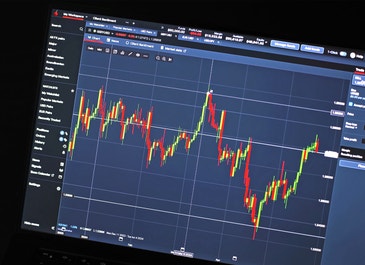The forex broker market, referred to as Forex or FX, is a dynamic setting wherever currencies are dealt globally. To succeed in that fast-paced market, traders should realize how to acknowledge developments and apply efficient strategies. Reliability in Forex trading is not almost creating repeated gains but also about handling chance and adapting to changing market conditions.

Knowledge Forex Developments
A trend in the Forex market refers to the common direction where a currency set is going over a particular period. Developments can be upward (bullish), downhill (bearish), or sideways (ranging). Recognizing these traits is vital for creating informed trading decisions.
Uptrends arise when rates regularly make higher heights and higher lows. Downtrends are discovered by decrease levels and decrease lows. In a sideways industry, value moves in just a selection without a distinct way, and that frequently happens throughout times of industry uncertainty.
Traders use trendlines, moving averages, and complex signals to help recognize and confirm trends. Knowledge the power and path of a development enables traders to align their methods with the market's momentum.
Key Forex Trading Strategies
A few trading techniques can help traders obtain regular effects in the Forex market. The performance of every strategy is dependent upon the trader's knowledge, time commitment, and chance tolerance.
Trend-following technique
This process requires entering trades in the path of the prevailing trend. Traders applying this strategy usually count on instruments like going averages, MACD, and ADX to ensure trend strength. The strategy would be to experience the tendency for as long as it remains unchanged, leaving when signs of reversal appear.
Breakout technique
Breakout trading is targeted on entering a posture when the cost pauses out of a definite selection or pattern. Traders search for crucial support and weight degrees and place trades when cost action breaches these levels with solid volume. This strategy is useful in markets organizing for a substantial move.
Selection trading strategy
In this technique, traders take advantage of price jumping between established support and resistance levels. It is most reliable in sideways areas where there is number obvious trend. Oscillators like RSI or Stochastic signals are often used to recognize overbought or oversold situations within the range.
Scalping technique
Scalping involves creating numerous little trades through the duration of the time to take advantage of little value movements. This technique involves rapid decision-making, high focus, and low transaction costs. Scalping can succeed for experienced traders with access to quickly execution platforms.
Risk Management for Uniformity
No strategy can promise gains without proper risk management. Traders must define their chance patience and set stop-loss and take-profit degrees for each trade. A standard concept is not to chance a lot more than one to two per cent of trading money about the same position.

Maintaining a trading record helps track performance, recognize styles, and produce required adjustments to strategies. Psychological control and control are similarly essential in preventing impulsive decisions that can result in losses.
